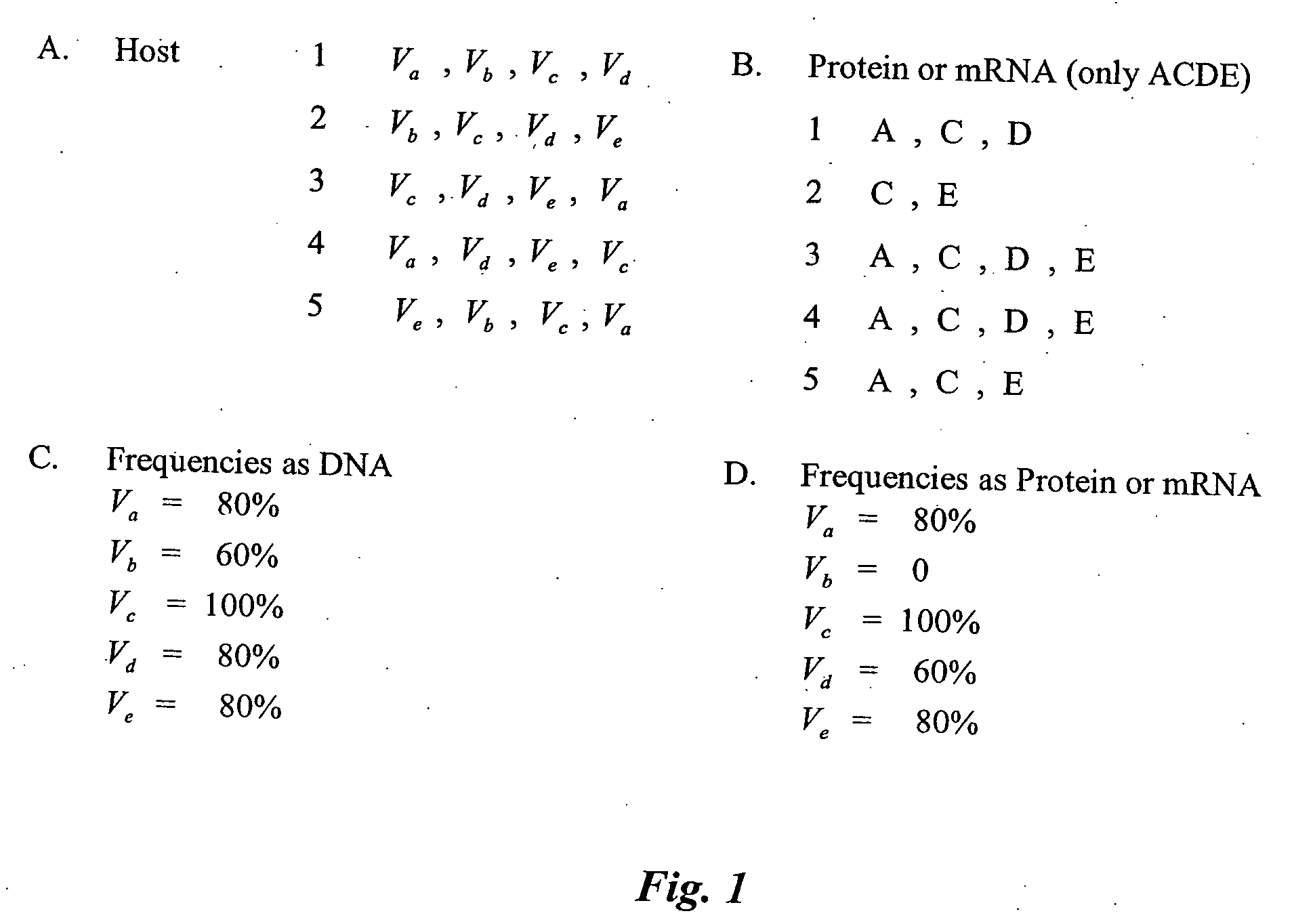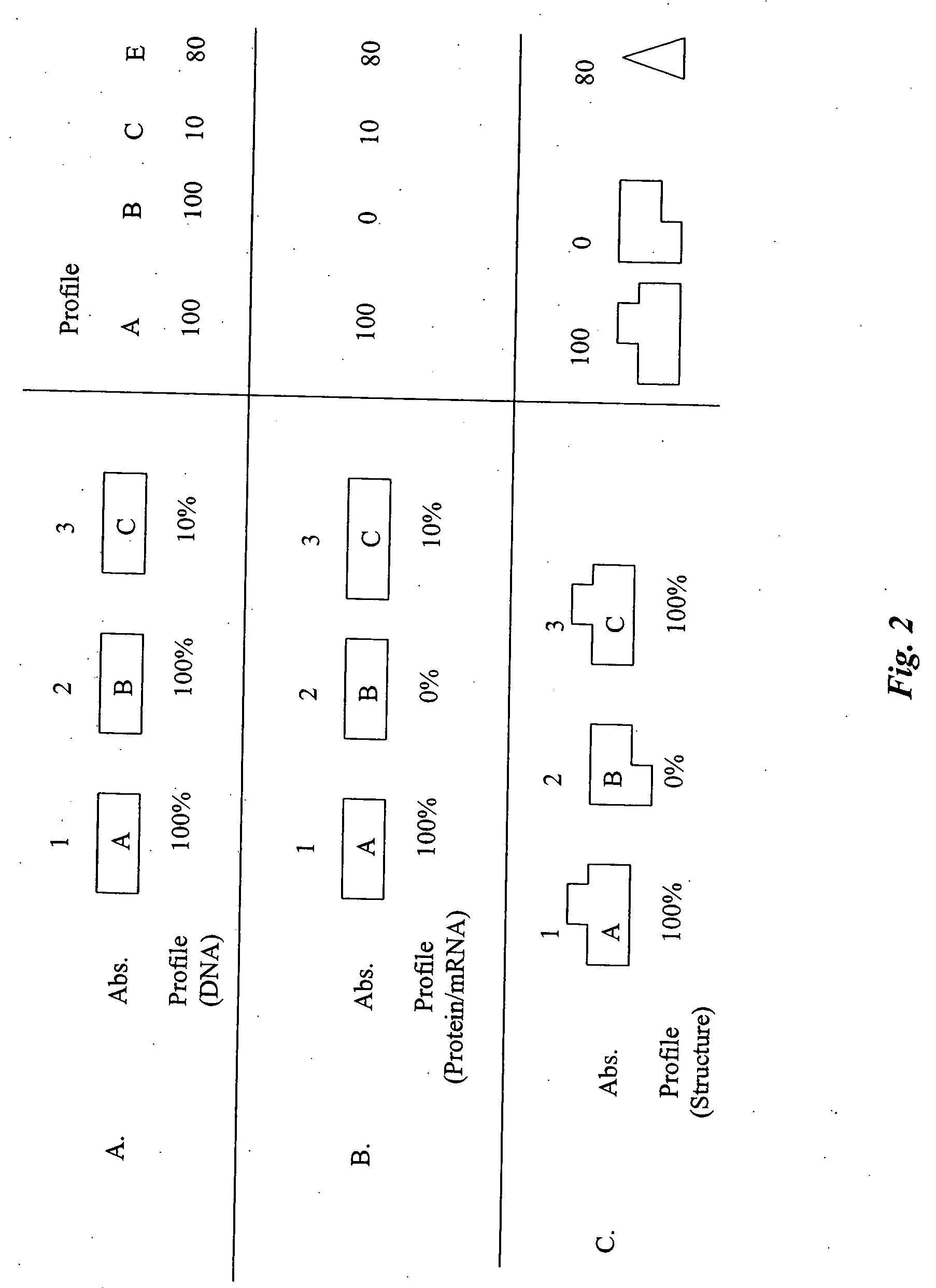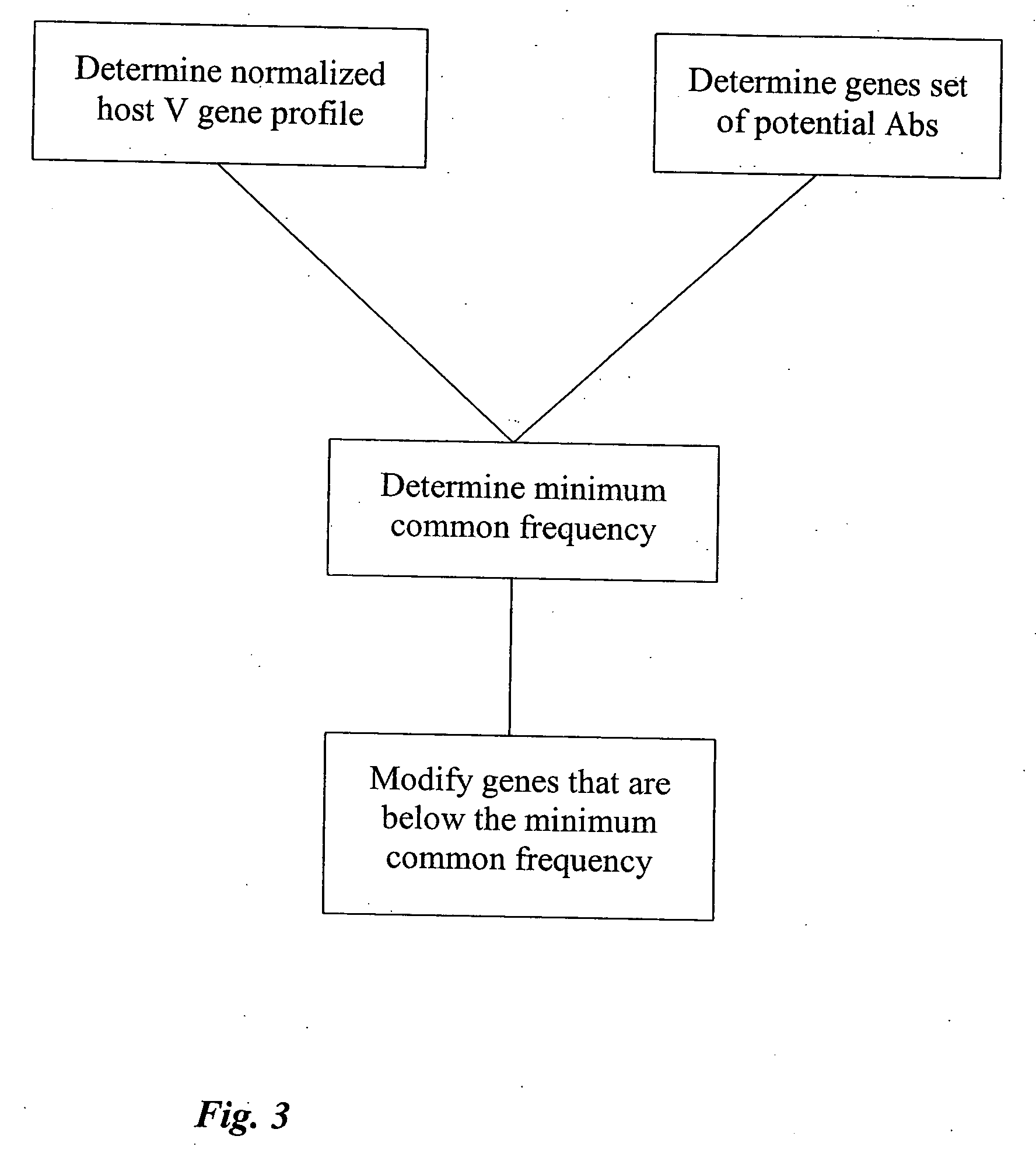Reducing the risk of human anti-human antibodies through V gene manipulation
a human anti-human antibody and gene manipulation technology, applied in the field of reducing the risk of human anti-human antibody response through v gene manipulation, can solve the problems of limited generalized autoimmune problems, patient risk of immune response, and failure to achieve the effect of reducing the probability of human anti-human antibody respons
- Summary
- Abstract
- Description
- Claims
- Application Information
AI Technical Summary
Benefits of technology
Problems solved by technology
Method used
Image
Examples
example 1
[0322] This example demonstrates how a normalized host VH gene profile can be generated. First, one determines which VH genes are present in all of the members of the profile. As the sequence of all the V genes are currently known, as well as methods for their identification, this is routine for one of skill in the art. Next, the frequency of occurrence for each gene is determined by determining the number of people in which the gene occurred and dividing that number by the number of people in the profile. As shown in FIG. 1A, the genes of five hosts are determined, and then normalized in various ways, as shown FIG. 1C. This is repeated for each gene to develop a full profile of V genes for a given population.
example 2
[0323] This example demonstrates how a normalized host V protein profile can be generated. The normalized host V gene profile of Example 1 is converted to various amino acid sequences for the genes that are actually expressed. An example of the proteins expressed from the V genes in FIG. 1A is shown in FIG. 1B and the resulting frequencies are shown in FIG. 1D.
[0324] As can be seen in comparing FIG. 1C and FIG. 1D, the frequency and thus the risk associated with the gene, can vary depending upon whether the analysis is performed at the DNA level or the protein level.
example 3
[0325] This example demonstrates changes that can be made in order to reduce the risk associated with a selection of genes. Once a high-risk gene is identified in a selection of genes, as shown in FIG. 3, it can be optimized. In order to increase the likelihood of reducing a HAHA response, and decrease the risk of a loss in functionality, the modification can be directed by information in the normalized host V protein profile. An example of this is demonstrated in FIG. 6. In FIG. 6, the gene to be optimized is gene C as it has the lowest frequency of occurrence (20%). In this example, gene C will be removed. If a replacement gene is required, the replacement of gene C will be determined by examining the profile to determine other genes with similar protein structures. Here, this can be gene B, or another gene that is more similar to gene B than it is to gene C.
PUM
| Property | Measurement | Unit |
|---|---|---|
| dissociation constant | aaaaa | aaaaa |
| dissociation constant | aaaaa | aaaaa |
| dissociation constant | aaaaa | aaaaa |
Abstract
Description
Claims
Application Information
 Login to View More
Login to View More - R&D
- Intellectual Property
- Life Sciences
- Materials
- Tech Scout
- Unparalleled Data Quality
- Higher Quality Content
- 60% Fewer Hallucinations
Browse by: Latest US Patents, China's latest patents, Technical Efficacy Thesaurus, Application Domain, Technology Topic, Popular Technical Reports.
© 2025 PatSnap. All rights reserved.Legal|Privacy policy|Modern Slavery Act Transparency Statement|Sitemap|About US| Contact US: help@patsnap.com



